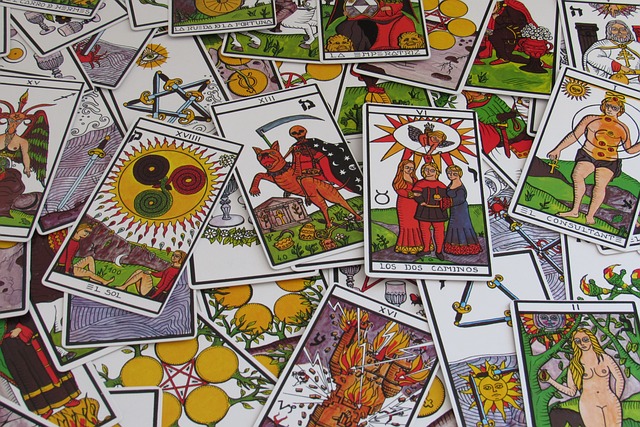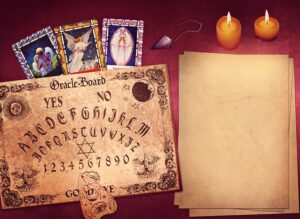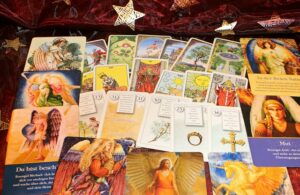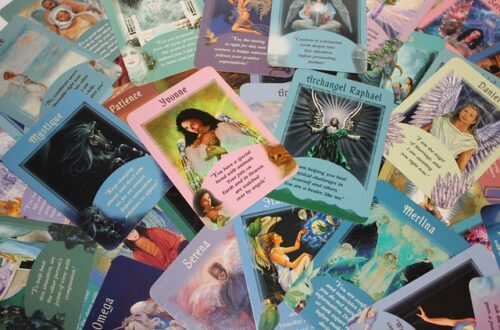
Simple Tarot Spreads for Beginners
Table of Contents
Simple Tarot Spreads for Beginners
Tarot cards have captivated people for centuries, offering insights into the past, present, and future. For beginners, exploring tarot spreads can feel overwhelming. However, understanding simple tarot spreads can greatly enhance your experience. In this article, we will discuss various basic spreads suitable for newcomers to tarot. Furthermore, we will provide clear instructions and insights into interpreting these spreads. By the end, you will feel more confident in your tarot reading journey.
What is a Tarot Spread?
A tarot spread refers to the layout of tarot cards during a reading. Each position in the spread represents a specific aspect of the query. Moreover, the placement and meaning of each card help provide a comprehensive view of the situation at hand. Various spreads can cater to different needs, whether you seek guidance on relationships, career choices, or personal growth. By utilizing tarot spreads, you can unlock deeper meanings and insights from the cards.
Read: https://magical-rituals.com/blog/2024/05/12/tarot-and-angel-cards-differences-and-similarities/
Why Use Simple Tarot Spreads?
Simple tarot spreads are particularly beneficial for beginners because they are easy to understand and interpret. Using fewer cards can help you focus on the essential messages without overwhelming details. Additionally, these spreads promote confidence as you learn to read the cards. By starting with simple layouts, you can gradually build your skills and intuition. As you gain experience, you can expand into more complex spreads, enhancing your readings even further.

Essential Tarot Spreads for Beginners
Now, let’s explore some simple tarot spreads that beginners can easily use. Each spread is designed to provide meaningful insights while remaining accessible.
1. The One-Card Spread
The one-card spread is the simplest form of tarot reading. It involves drawing a single card from the deck. This spread is particularly useful when you need quick guidance or a daily affirmation. Here’s how to conduct a one-card spread:
- Shuffle the deck while focusing on your question or intention.
- Draw one card and place it face up.
- Interpret the card based on its meaning and position in your life.
For instance, if you draw the Two of Cups, this card often symbolizes partnerships and harmonious relationships. You can take this as a sign to nurture your connections with others. Moreover, it can prompt reflection on how you can strengthen these bonds.
2. The Three-Card Spread
The three-card spread offers a broader perspective compared to the one-card spread. This layout is often used to explore a situation’s past, present, and future. Here’s how to perform a three-card spread:
- Shuffle the deck while concentrating on your inquiry.
- Draw three cards and place them from left to right.
- The first card represents the past, the second card represents the present, and the third card indicates the future.
For example, if you draw the Wheel of Fortune, The Lovers, and The Chariot, the interpretation could indicate a significant change in your past, a current focus on relationships, and future triumph through determination. This spread allows you to see how past experiences shape your current situation and what paths lie ahead.

3. The Relationship Spread
This spread is perfect for those seeking insights into romantic or platonic relationships. It typically involves five cards, each representing different aspects of the relationship. To perform the relationship spread:
- Shuffle the deck while focusing on the relationship you want to examine.
- Draw five cards and arrange them in a cross shape.
- Interpret the cards based on their positions:
- Card 1: Your feelings.
- Card 2: Your partner’s feelings.
- Card 3: The strengths of the relationship.
- Card 4: The weaknesses of the relationship.
- Card 5: Possible outcome.
For instance, drawing The Empress for your feelings suggests nurturing and love, while The Devil for your partner’s feelings may indicate feelings of entrapment or obsession. This spread encourages open communication about emotions and relationship dynamics, fostering growth and understanding.
4. The Career Spread
This spread can provide insights into your professional life and career direction. It typically involves four cards, each representing different aspects of your career. To use the career spread:
- Shuffle the deck while focusing on your career questions.
- Draw four cards and arrange them in a vertical line.
- Interpret the cards based on their positions:
- Card 1: Current situation.
- Card 2: Challenges faced.
- Card 3: Opportunities available.
- Card 4: Advice moving forward.
For example, drawing The Tower for your current situation may indicate a sudden change or upheaval. In contrast, The Sun as advice suggests that positivity and success are achievable if you stay focused on your goals. This spread can guide you in making crucial career decisions and navigating challenges effectively.

5. The Daily Guidance Spread
This spread is great for providing daily insights and affirmations. It typically involves three cards, which guide your day. To conduct the daily guidance spread:
- Shuffle the deck while focusing on your intentions for the day.
- Draw three cards and place them in a row.
- Interpret the cards based on their meanings:
- Card 1: The theme of the day.
- Card 2: Challenges to expect.
- Card 3: How to navigate the day.
For instance, drawing The Star as the theme may indicate hope and inspiration, while The Moon might suggest emotional challenges ahead. This spread helps set your intentions and prepare for the day, offering clarity and focus.
Interpreting Tarot Cards
Understanding how to interpret tarot cards is crucial for gaining insights from your spreads. Each card has a specific meaning, often influenced by its position and surrounding cards. Here are some essential tips for interpretation:
- Know the Meanings: Familiarize yourself with the meanings of each card. Utilize tarot guides or books for reference. Study both the upright and reversed meanings to expand your understanding.
- Intuition Matters: Trust your intuition while interpreting cards. Often, your gut feelings can lead to deeper insights that books may not cover. Allow your emotional responses to guide your interpretations.
- Consider the Context: Always consider the question or situation at hand. The same card can have different meanings depending on the context. Reflect on how the card relates to your specific query.
- Use Reversals: Consider using reversed cards to add more depth to your readings. Reversed cards can indicate blockages or challenges. This additional layer can provide more comprehensive insights.
- Observe Patterns: As you gain experience, pay attention to patterns in your readings. Notice if certain cards frequently appear or if specific spreads yield consistent results.
Developing Your Tarot Practice
To become proficient in tarot reading, regular practice is essential. Here are some tips for developing your tarot practice:
- Daily Draws: Consider drawing a card daily. Reflect on its meaning and how it applies to your life. This practice helps you connect with the cards and build your intuition.
- Journaling: Maintain a tarot journal to record your readings and interpretations. Writing down your thoughts can enhance your understanding and track your progress over time.
- Join a Community: Connect with other tarot enthusiasts through forums, social media, or local groups. Sharing experiences and insights can deepen your knowledge and inspire you.
- Explore Different Decks: Experiment with various tarot decks to find one that resonates with you. Each deck has its unique artwork and symbolism, which can enhance your readings.
- Trust Your Journey: Remember that tarot is a personal journey. Trust your instincts, and don’t be afraid to make mistakes. Each reading offers a learning opportunity.
Conclusion
In conclusion, tarot spreads can provide profound insights and guidance, especially for beginners. Starting with simple spreads allows you to build your confidence and understanding of tarot. The one-card, three-card, relationship, career, and daily guidance spreads are excellent starting points. As you become more comfortable with these spreads, you can explore more complex layouts. Remember that tarot is not just about the cards; it’s about connecting with your intuition and the energies around you. Happy reading!
Bibliography
- Benebell Wen. (2016). The Holistic Tarot: An Integrative Approach to Using Tarot for Personal Growth. North Atlantic Books. ISBN: 978-1623170526.
- Rachel Pollack. (2005). 78 Degrees of Wisdom: A Book of Tarot. Weiser Books. ISBN: 978-1578632920.
- Mary K. Greer. (2002). Tarot for Your Self: A Workbook for Personal Transformation. New Page Books. ISBN: 978-1601630437.
- Joan Bunning. (1998). Learning the Tarot: A Tarot Book for Beginners. Weiser Books. ISBN: 978-1578630315.
- Liz Dean. (2012). The Ultimate Guide to Tarot. Hay House. ISBN: 978-1781800630.
- Theresa Reed. (2020). The Tarot Coloring Book. The Wild Unknown. ISBN: 978-1945005750.
- https://en.wikipedia.org/wiki/Tarot




